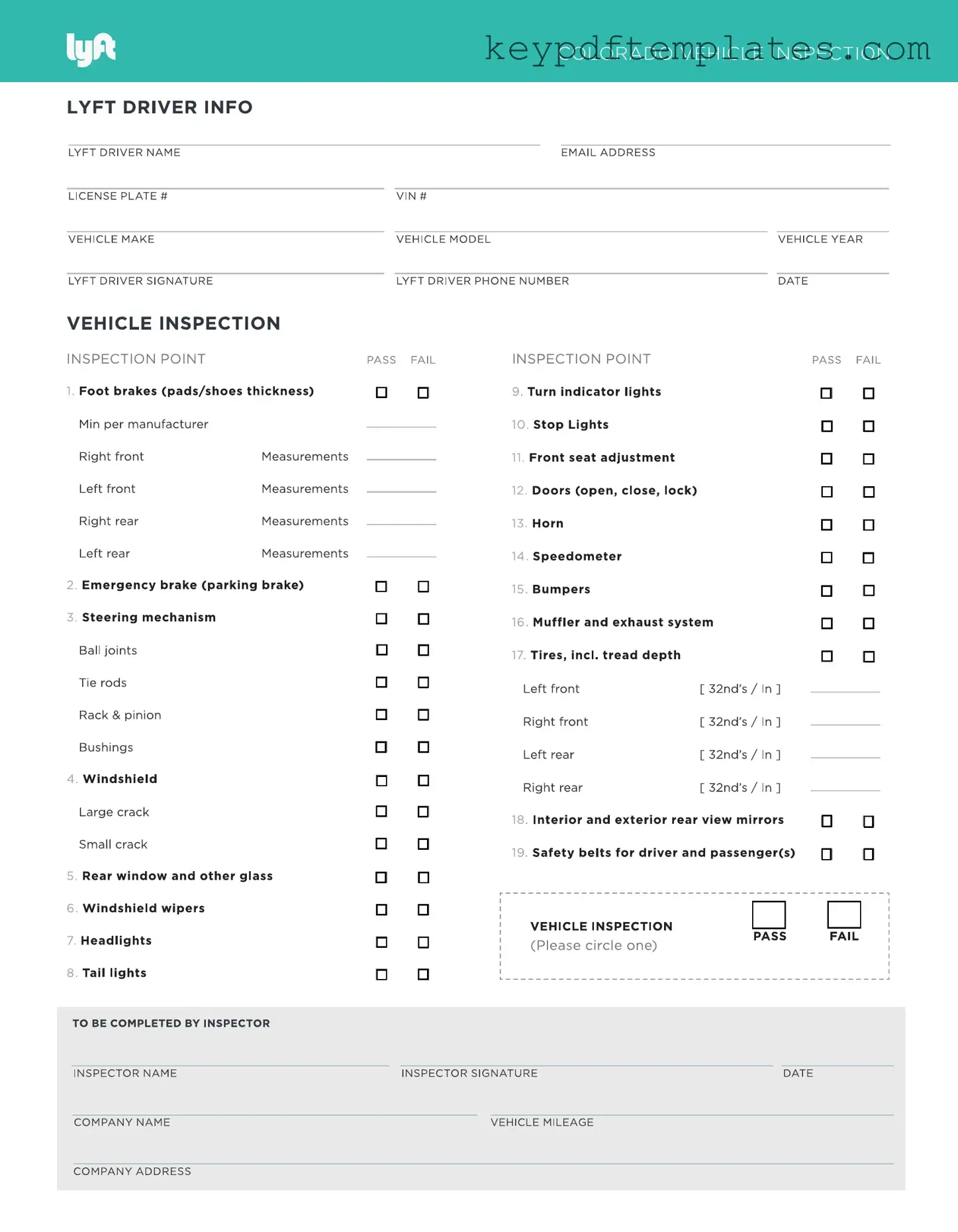Get Lyft Inspection Form
The Lyft Inspection Form is a crucial document that ensures vehicles meet safety and operational standards for rideshare services. This form is typically completed by certified mechanics and serves as a checklist to verify that all necessary inspections have been conducted. Understanding how to fill out and submit this form is essential for drivers looking to stay compliant with Lyft's requirements.
Modify Document Online
